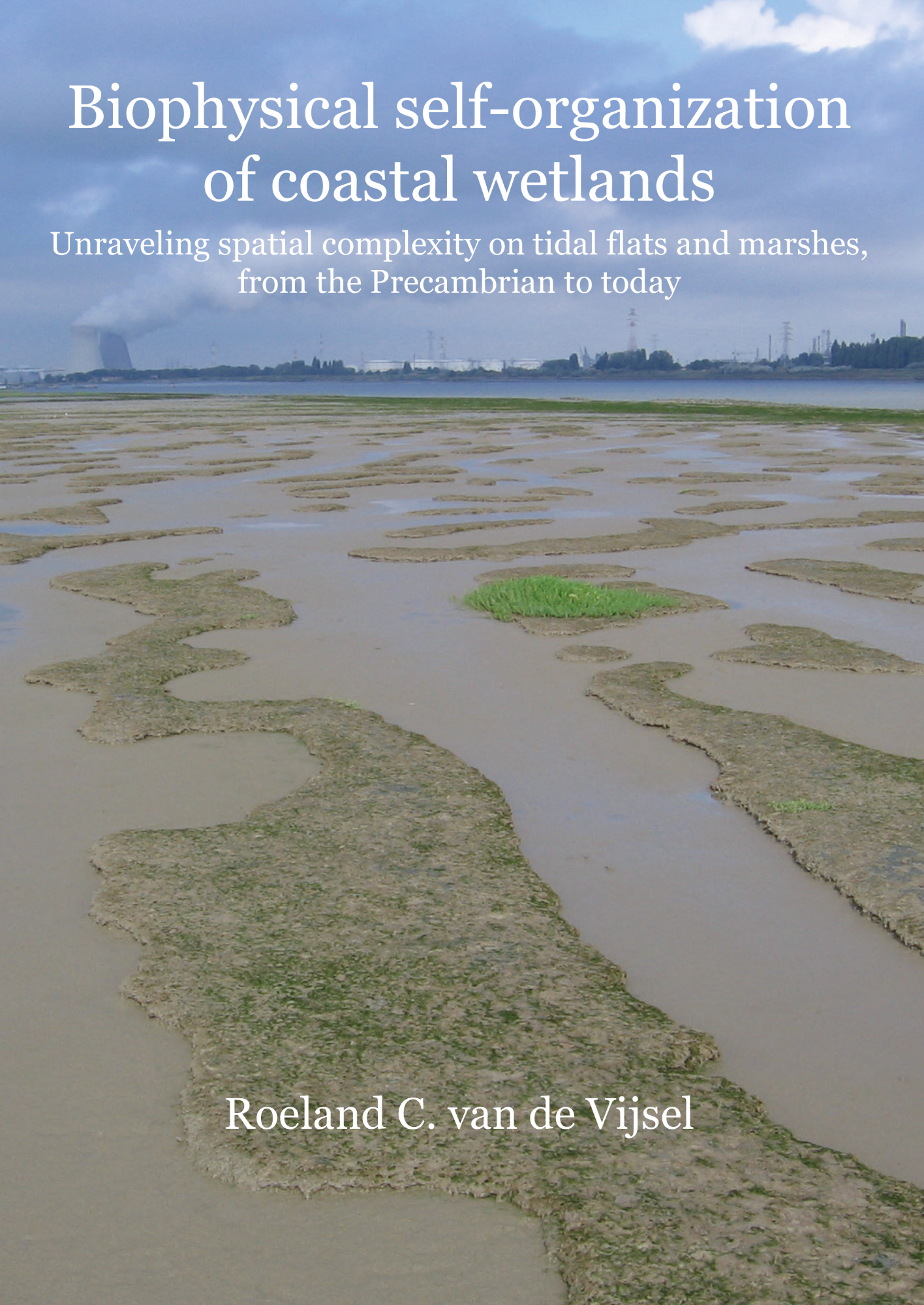Blueprints for future coastal protection shaped in geological past
Repetitive patterns
Van de Vijsel compares the complex formation of coastal landscapes on tidal flats and marshes with the so-called ‘Droste-effect’. With ‘Droste’, he refers to old Dutch cacao-boxes, picturing a woman holding a cacao-box, and on that box again the same woman holding the box, and again, and again, and again. 'Our study of spatial patterns on mudflats in the Scheldt estuary, near the Belgian port of Antwerp, showed that channels on mudflats are formed in the same repetitive way, with side branches, and even smaller side branches. The formation of these tidal channel networks is highly influenced by the presence of algae, that create firm mats on the soft mud. These algae can create stable ridges in the mud. These ridge patterns allow plants to grow on the mud. The presence of algae and plants, forces the flow of water into smaller and smaller, parallel channel branches.'
Going back millions of years
The present evolution of bare mudflats into algal ridges and complex branching channels and plant-colonized marshes, can be compared to the evolution of life on land more than 500 million years ago, Van de Vijsel says. 'During the Precambrian, the period before there were plants on land, mud was also fixed by algae. Millions of years later, landscapes with channels and the first higher plants evolved. By looking at the present, small-scale evolution of channels on mudflats and saltmarshes along the coast, you are effectively looking at an image of how plants colonized newly formed landscapes on Earth, millions of years ago.'
Managing expectations
'This research teaches us a lot about the shaping of landscapes, in the past and the present, but also for the future', Johan van de Koppel, NIOZ researcher and professor of spatial ecology at the University of Groningen adds. 'We can benefit from this knowledge while creating opportunities for new natural landscapes along the Dutch coast. Only by letting nature take its course, in creating channels with algae and, later on, plants, robust landscapes will be formed. These landscapes do not only harbor a rich biodiversity, but also protect our coastline against storms and floods.'
Background - About the method
For his PhD-thesis, Van de Vijsel studied the spatial patterns of channels and ridges on mudflats in the Scheldt estuary, near the Belgian port of Antwerp. 'Using laser scanners and drones, we mapped the channels and ridges on the bottom on the millimeter scale. Over time, we studied growth or decline of these patterns. Furthermore, in big water tanks in the lab we mimicked the conditions on a tidal flat, to study how mud is held together by algae. Finally, we put all these parameters in a computer model, that helped us predict the evolution of tidal landscapes.'
‘Slikken en schorren zijn levend geologieboek’
PhD defence
Roeland van de Vijsel
Biophysical self-organization of coastal wetlands. Unraveling spatial complexity on tidal flats and marshes, from the Precambrian to today.
Supervisors: Prof. dr. Johan van de Koppel, Prof. dr. Tjeerd J. Bouma and Prof. dr. Daphne van der Wal
19th of March 2021, 14:30
University of Groningen
